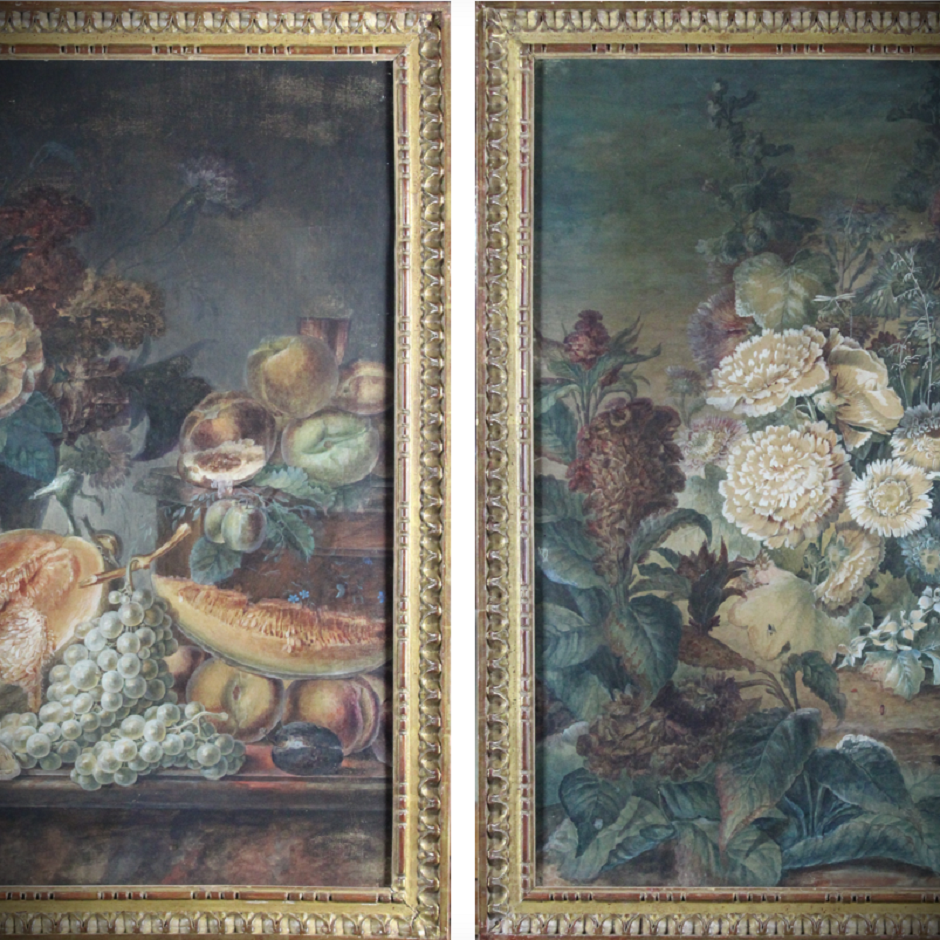Anne SOWERBY née BRETTINGHAM DE CARLE (1764-1815)
Demande d'informations
| - still life with flowers, fruit and a moth |
| - still life with flowers and a fly |
| Watercolours and gouaches on paper mounted on canvas |
| One signed ‘Carle’ on the lower right-hand side |
| 59cm x 48cm |
| Fin du XVIIIe siècle |
More info
Late 18th century One of them is presented on a bas-relief entablature, in the style of comparable subjects from the northern school. Painted in gouache and watercolour on laid paper, their dimensions are unusual and of a good size for paintings on paper.
The palettes clash, the colours are contrasting and warm for one and more monochromatic for the other. On closer inspection, the writing is precise and in places shows a mastery approaching that of a miniature: insects, grapes, highlights on the edges of leaves and petals, etc.
Born into a family of masons from Norwich, Anne de Carle's small number of known works are mainly still lifes with flowers executed using this mixed technique of watercolours and gouaches.
This favourite subject is not surprising, as our artist married one of the most famous botanists and illustrators of her time. We know that the art world was not unfamiliar to her before her marriage. She was the niece of the very famous architect Matthieu Brettingham, and the brother of Robert de Carle, sculptor and modeller for the Coade Factory. It was de Carle who met James Sowerby during his studies, thus facilitating his marriage to his sister, Anne, in 1786.
In 1771, at the age of fourteen, James Sowerby began an apprenticeship in the studio of the naval painter Richard Wright. Six years later, he began art studies at the Royal Academy of Arts in London, specialising in miniature painting. It was precisely these skills that attracted William Curtis, the famous botanist, who immediately hired him as an illustrator for his Flora Londinensis. He came into contact with many naturalists such as James Edward Smith and Dawson Turner. From these encounters and thanks to the development of English botany, a work of 2,592 hand-coloured engravings was born, known as ‘Sowerby's Botany’.
Anne de Carle and James Sowerby found themselves at the head of a veritable dynasty of renowned botanists and illustrators spanning four generations. This dynasty left an indelible mark, not least because it is commemorated in the names of several plants and fungi, such as Sowerbaea, a perennial plant endemic to Australia first described by James Sowerby in 1798. The most recent, Arthur de Carle Sowerby (1885–1954), Anne's great-grandson, explorer and naturalist, perpetuated the family tradition by providing numerous specimens to the British Museum and to the museums of Shanghai and Washington.
Two portraits of Anne de Carle are preserved in the Natural History Museum in London.
Avis
Aucun avis n'a été publié pour le moment.












